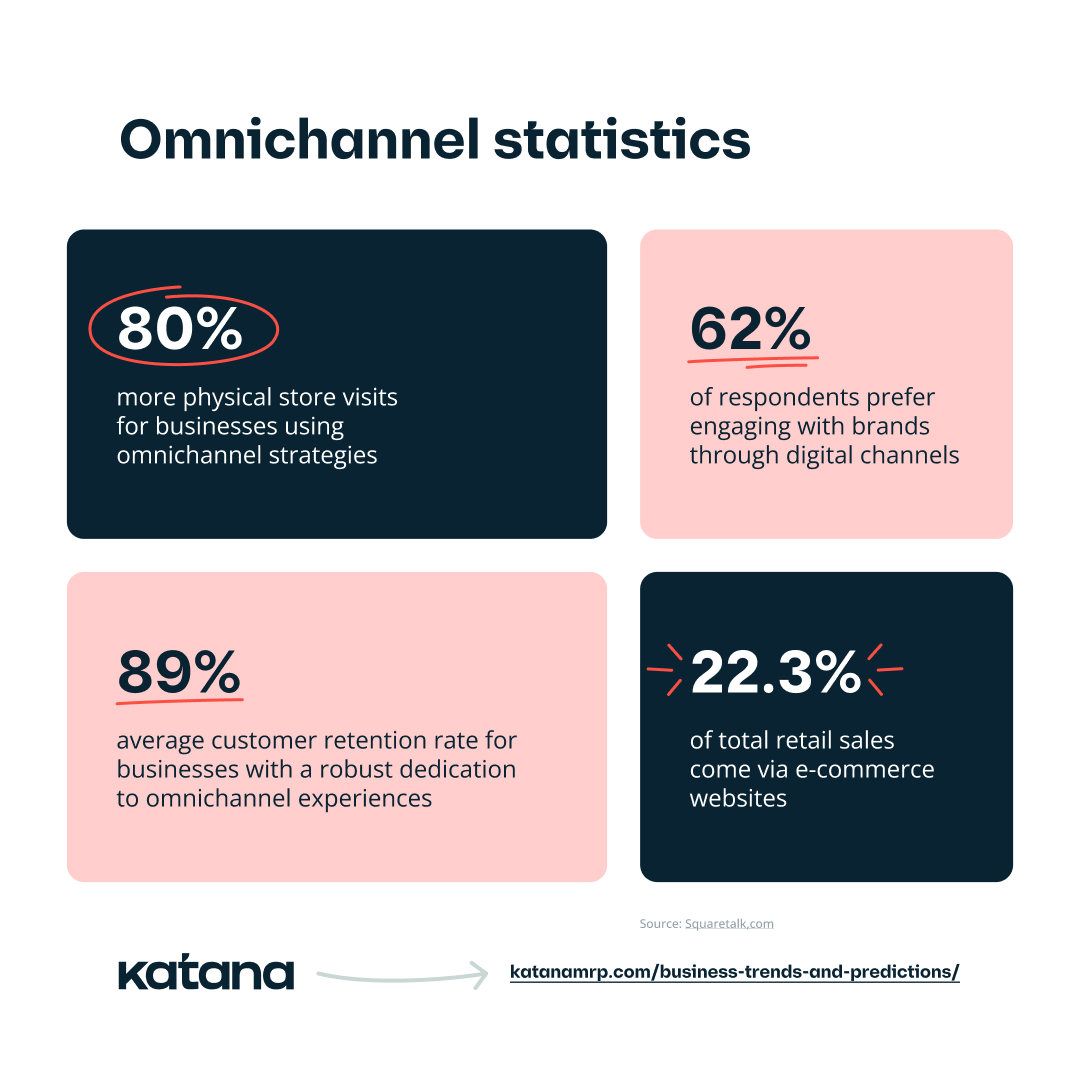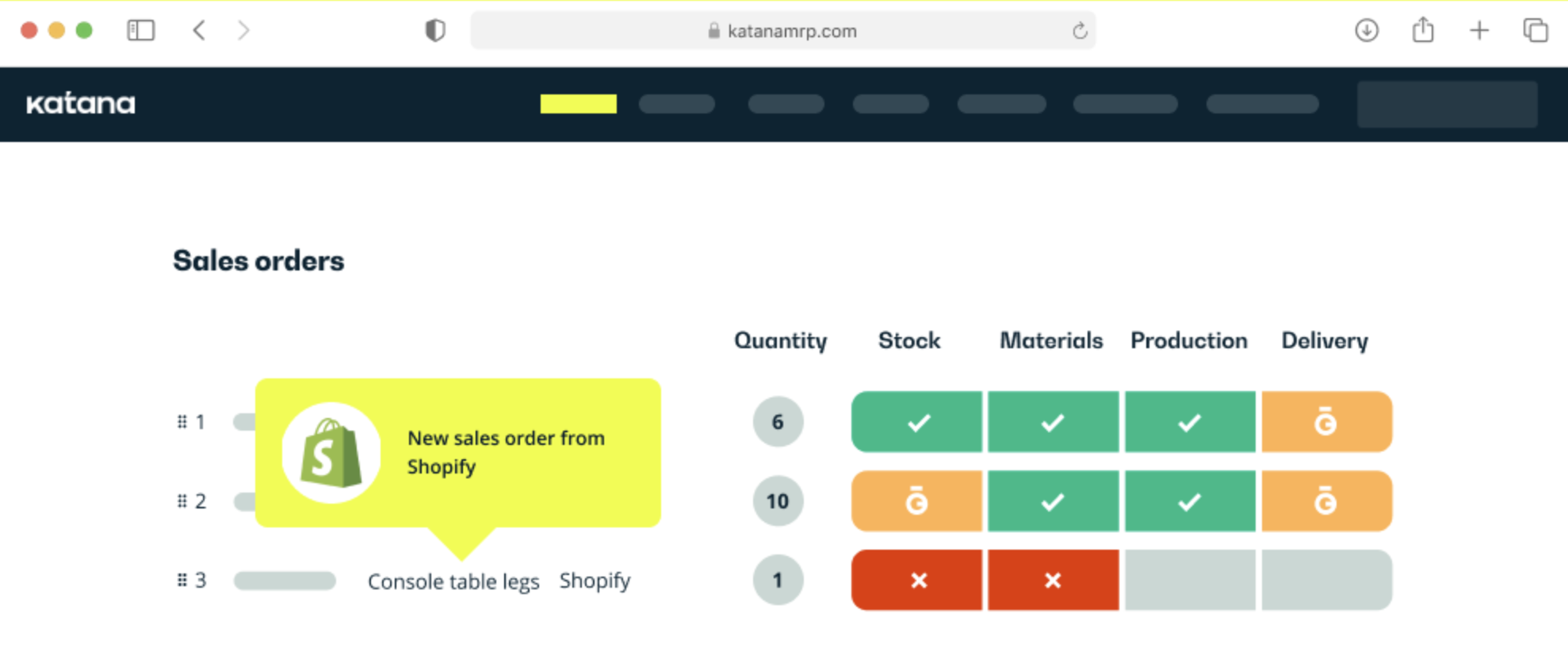Omnichannel retail: Seamless shopping experience
Explore the transformative potential of Shopify’s multiple warehouses in this comprehensive guide that delves into the strategies for streamlining operations and enhancing efficiency across multiple locations, paving the way for business growth and customer satisfaction.

Henry Kivimaa
Once upon a time, if a shopper was looking to make a purchase, they had to find a store selling the desired item, physically locomote there, and only then could they acquire it.
Along with the dotcom boom, arrived thousands of websites for every business and person imaginable. Many of them provided moderately low-value experience — giving a little intro about the person behind the website, introducing you to their cat, and listing some games like RuneScape that they liked to play.
Luckily, besides these personal homepages, some websites did provide value — among them online stores. These innovative storefronts paved the way for a new kind of shopping experience known as e-commerce, a precursor to omnichannel commerce.
Online stores allowed businesses to set up shop for quite cheap, compared to brick-and-mortar stores. They were also easily accessible to consumers. This led every business owner and their grandma to open an e-commerce store and start selling goods online.
While many businesses have now moved completely online, many still benefit from both online and offline shoppers, offering a whole new kind of experience.
One of the early examples of a move towards omnichannel commerce can be seen with companies like Best Buy and Walmart in the early 2000s. These retailers began to integrate their online and offline channels by allowing customers to order products online and pick them up in-store or by providing the ability to check store stock levels online.
This integration represented a significant shift towards a more connected shopping experience, utilizing omnichannel technologies to bridge the gap between digital and physical retail spaces.
Though this was just the beginning of what would eventually be known as omnichannel retailing, the term “omnichannel” itself started gaining popularity in the retail industry around the 2010s as technology advanced and consumer expectations for a seamless shopping experience increased.
Retailers began to recognize the importance of offering a unified brand experience across all customer touchpoints, including social media, customer service, and mobile apps, in addition to traditional online and physical stores, thus crafting a comprehensive retail strategy,
As we dig deeper into omnichannel retail trends, it’s important to understand precisely what is omnichannel retail and how it differentiates from traditional retail models. Just to make it crystal clear, let’s go over the definition of omnichannel retail, highlighting its importance in today’s consumer market and underlining how omnichannel commerce has evolved to meet the needs of shoppers.
What is omnichannel retail?

Omnichannel retail is a sales approach that aims to provide customers with a seamless shopping experience in various channels.
Whether online from a desktop or mobile device, by telephone, or in a brick-and-mortar store — omnichannel retail uses different centralizing technologies to merge all the different shopping methods available to consumers into one intertwined experience.
The term “omnichannel” means integration and coordination among channels, giving customers the flexibility to switch between different modes of shopping effortlessly.
The basis of omnichannel retail is understanding and meeting the customer’s needs at every touchpoint. It’s about creating a consistent brand presence that allows consumers to move smoothly between physical and digital stores without any hiccups in their experience.
For instance, a customer might see a product online, decide to check it out in person at the store, and then choose to purchase it through the company’s mobile app. An omnichannel approach helps make sure this journey is possible, practical, and pleasant.
Key components of omnichannel retail include:
- Shared data and analytics
- Consistent and personalized marketing messages across channels
- A unified customer service philosophy
Businesses can tailor their offers and interactions to meet customer preferences and trends based on data collected across various channels. A personalized approach enhances the customer experience while also boosting loyalty and sales.
Omnichannel retailing recognizes the blurred lines between online and offline shopping.
Consumers today expect flexibility and convenience in every shopping experience. An effective omnichannel strategy meets these expectations by providing a smooth shopping journey and ensuring that customers who walk into a store, browse a website, or use an app receive the same level of service and brand experience.
Omnichannel vs. multichannel retail

We mentioned that omnichannel retail is a multichannel approach, but you may have seen these terms used as synonyms.
So, is there really a difference? Absolutely.
While both omnichannel and multichannel retail involve selling products through multiple channels, the key difference lies in how these channels are integrated and how they relate to the customer experience.
Multichannel retail
Multichannel retail is a sales strategy that includes engaging with customers through various channels.
This can include:
- Physical stores
- Online websites
- Social media platforms
- E-commerce apps
Each channel operates independently, with its own strategy and goals, without integrating with the other platforms. The focus here is on maximizing the reach and efficiency of each channel and gaining as broad an audience as possible.
However, this approach can interfere with a smooth customer experience, as the lack of integration between channels may cause inconsistent messaging, branding, and customer service.
Omnichannel retail
Omnichannel retail takes a more customer-focused approach. It highlights the importance of multiple channels and creates a more integrated and harmonious experience across all of them.
The idea is to make the transition between channels smooth and simple for the customer, making sure they receive a consistent brand experience — regardless of whether they’re shopping online, through a mobile app, or in a physical store. This requires a deep integration of backend systems, from inventory management to customer relationship management (CRM), to create a unified customer profile and enable a more personalized approach.
Example of an omnichannel retail strategy

Let’s create a fictional retail brand, EcoWear, to illustrate the journey of a successful omnichannel retailing strategy.
EcoWear sells sustainable clothing online and in physical stores. Its omnichannel commerce strategy offers a seamless and personalized shopping experience across all channels, allowing customers to interact with the brand in a way that’s most convenient for them at any given moment.
Website and mobile app integration
EcoWear’s website and mobile app are fully integrated, allowing customers to save their shopping cart and preferences across devices.
A customer might begin browsing the EcoWear collection on their mobile app during their commute and later switch to the website on a desktop to complete the purchase, finding their cart items and preferences saved and ready for checkout — a prime example of omnichannel technologies working together seamlessly.
Personalized marketing
Using customer data from both online and offline purchases, EcoWear sends personalized email and app notifications about new collections, exclusive deals, and recommendations based on past shopping behavior.
Targeted marketing improves customer engagement and encourages repeat visits to both the website and physical stores.
In-store experience
In EcoWear stores, customers can use interactive kiosks to browse the entire inventory, including items not currently available in-store. They can also scan product barcodes to read reviews, check stock in other locations, or order products to be shipped directly to their home if their size or preferred color is not available in-store at the moment.
Pro tip: If you’re interested in learning more about managing a physical storefront or are considering branching out from your online Shopify shop, check out this article on Shopify point-of-sales.
Seamless online-to-offline services
EcoWear offers services like “buy online, pick up in-store” (BOPIS) and “buy online, return in-store” (BORIS), bridging the gap between online and offline shopping.
Customers appreciate the flexibility of shopping online, picking up their purchases, or handling returns in person without the wait or cost of shipping.
Social media integration
EcoWear uses social media platforms not just for marketing but as channels for sales and customer service. Customers can shop directly from Instagram posts, engage with the brand through Facebook Messenger for queries, and participate in Twitter (X) polls to be a part of future product development.
Loyalty program
The EcoWear loyalty program rewards customers for purchases made both online and in-store, as well as for social media engagement and in-app activities. Points can be redeemed for discounts, exclusive access to sales, or special in-store experiences, encouraging customers to engage with the brand across all platforms and channels.
This allows EcoWear to provide a cohesive, customer-centric shopping experience that increases engagement, boosts sales, and builds loyalty.
Integrating online and offline channels creates a personalized and convenient shopping experience for EcoWear’s customers, regardless of how they choose to shop.
The importance of omnichannel retail

The importance of omnichannel retail in today’s market shouldn’t be underestimated. As customers become more aware of their needs and digital technology advances, a smooth shopping experience across multiple channels is not just a competitive feature but a necessity to survive and grow in the retail sector.
Here are several reasons why omnichannel retail is so crucial.
Bridging the online-offline divide
Omnichannel retail is key in bridging the gap between online and offline sales and creating one big retail ecosystem. This connection reflects the modern consumer’s journey across digital and physical stores.
By seamlessly linking these two worlds, retailers can offer an all-around shopping experience that matches today’s interconnected lifestyle.
Building a resilient retail model
Omnichannel strategies prepare businesses against changes in the market and consumer trends.
By offering various ways for customers to interact with and purchase from a brand, retailers create a safety net against possible disruptions, whether caused by the economy, technology, or global events. This sort of adaptability is vital to survive in the ever-changing retail landscape.
Omnichannel retail in numbers

- Approximately 73% of consumers prefer to shop across multiple channels.¹
- Shoppers who use multiple channels display a 30% greater lifetime value compared to those who shop via a single channel. ¹
- Customers engaging with multiple channels tend to spend about 4% more in physical stores and 10% more online than those who limit their shopping to one channel.²
- 43% of consumers report making online purchases from their beds, while 23% do so at work, and 20% engage in online shopping from the bathroom or while driving.³
- 98% of Americans switch between devices daily, with 57% open to sharing personal information in return for a more personalized approach from brands.⁴
Optimizing inventory and supply chain efficiency
Beyond customer-facing benefits, omnichannel retail also plays a big role in optimizing backend operations.
With a unified view of sales, inventory, and customer data, businesses can make more informed decisions regarding managing their inventory, supply chain logistics, and demand forecasting. This allows them to reduce waste, lower costs, and improve the overall efficiency of retail operations, which in turn contributes to a healthier bottom line.
Improving competitive strategy by standing out
Retail is competitive, and to succeed, you need to differ from the countless others in this space.
Omnichannel retail allows businesses to stand out through the quality of the customer experience they provide. Offering a smooth, integrated experience across all channels helps retailers elevate their brand, distinguishing themselves from competitors who have yet to discover the benefits of an omnichannel strategy.
Future-proofing the business
Embracing omnichannel retail is also an investment for the future.
As technology continues to evolve and buyer priorities shift towards more integrated and personalized experiences, businesses that have already adopted an omnichannel approach have a clear advantage in adapting and thriving. This progressive strategy allows retailers to remain relevant and competitive in the digital age.
Benefits of omnichannel retail

The transition to omnichannel retail offers many benefits for both businesses and consumers.
Providing a seamless shopping experience across all channels empowers companies to meet the high expectations of today’s consumers, drive sales, enhance customer satisfaction, and foster loyalty.
Below, you’ll find some key benefits of implementing an omnichannel retail strategy.
Enhanced customer experience
One of the most significant advantages of omnichannel retail is improving customer experience. Buyers appreciate the convenience and flexibility of easily shopping across platforms.
An omnichannel approach ensures that whether they are online, on a mobile app, or in a physical store, the shopping experience is consistent and seamless for all consumers. This often leads to increased customer satisfaction and loyalty.
Increased sales and revenue
Omnichannel retailing can lead to higher sales and revenue.
Offering multiple shopping channels for customers allows businesses to capture sales from buyers who prefer different methods.
Also, data and analytics from an omnichannel approach help businesses create personalized marketing and sales strategies to increase the effectiveness of these efforts and boost sales.
Improved customer insights
Implementing an omnichannel strategy allows businesses to collect and analyze data across all channels. This helps them gain valuable insights into:
- Customer behavior
- Buyer preferences
- Purchasing patterns
- Seasonal trends
A comprehensive view enables companies to tailor specific product offerings, marketing messages, and overall strategies to better meet the needs of their target audience. These actions help increase customer engagement and brand loyalty.
See Katana in action
Sign up for a free demo call with our team of experts and find out how Katana can work for your business
Higher customer retention
Omnichannel retail creates a personalized and seamless shopping journey that can significantly boost customer loyalty. Customers who have enjoyed a consistent and convenient shopping experience across multiple channels are more likely to return.
Personalization makes buyers feel valued and understood, which further strengthens this relationship and increases retention rates.
Competitive advantage
In a market where consumers have endless choices, offering an omnichannel experience can set a business apart from its competitors.
An omnichannel strategy mostly attracts customers who seek convenience, personalization, and a high-quality shopping experience. This gives companies a progressive, innovative, and customer-focused image, which is considered a success for many brands.
Operational efficiency
Omnichannel retail can also improve operational efficiency.
Integrated inventory management systems, for example, can provide a live view of stock levels across all channels, reducing the risk of stockouts or excess inventory. This integration helps streamline operations, reduce costs, and allows customers to always find the desired products.
Flexibility and scalability
With an omnichannel approach, businesses can quickly adapt to changes in consumer behavior or market conditions.
The integrated nature of omnichannel systems means that companies can easily scale up or modify their operations across different channels to meet evolving customer needs or to adapt to new market opportunities.
Omnichannel retail challenges

While the omnichannel retail approach seems to open the door to a brave new world of shopping, seamlessly integrating multiple channels into a single, harmonious customer experience, it is not without its trials and tribulations.
Implementing an omnichannel strategy presents a myriad of challenges, each a hurdle that businesses must clear to provide the seamless shopping experience consumers now expect. Let’s dive into some of these challenges.
Data silos
One of the first obstacles many retailers face is the issue of data silos.
In a multichannel environment, each channel might operate independently, collecting and storing customer data in isolation. Transitioning to an omnichannel approach requires breaking down these silos to create one big unified database that provides a 360-degree view of the customer.
This integration is crucial for personalizing the shopping experience but can be a challenge for businesses with deep-rooted systems in place.
Technology integration
Hand in hand with the challenge of data silos is the broader issue of technology integration.
An effective omnichannel strategy relies on the seamless interaction of various systems. These often include inventory management and CRM, ecommerce platforms, and point-of-sale systems.
This level of integration often requires significant investment in new technologies and the assessment of all existing infrastructure, which is both costly and complex, to begin with.
Inventory management
Effective inventory management becomes exponentially more complicated in an omnichannel environment. Retailers have to be able to track and manage stock levels in real time across multiple locations and channels to fulfill customer orders efficiently and accurately.
This requires not only sophisticated inventory management systems but also a flexible supply chain that can adapt to demand fluctuations.

Inventory management guide
Inventory management doesn’t have to be complex. Learn about best practices, tips, and tricks from this downloadable e-book.
Consistent brand experience
Maintaining a consistent brand experience across all channels is another major challenge. Customers expect to encounter the same brand identity, values, and level of service whether they’re shopping in-store, online, or through a mobile app.
Ensuring this consistency demands careful attention to detail and a coordinated effort across all departments, from marketing and sales to customer service and fulfillment.
Customer service
Omnichannel retail elevates the level of service that your customers expect.
Consumers anticipate seamless support throughout their shopping journey, regardless of the shopping channel. Providing this level of service requires thorough training for your customer service representatives. They need access to comprehensive customer data gathered from all platforms to offer personalized assistance.
Channel conflicts
Lastly, when pricing, promotions, and product availability vary between channels, it can create conflicts. These discrepancies can frustrate customers and negatively impact trust in the brand.
Harmonizing these elements across all channels is critical but can be challenging, especially for businesses that rely on different teams or partners to manage each channel.
Addressing these hurdles requires a strategic approach, embracing technological innovation, and fostering a culture of adaptability and customer-centricity within the organization. But despite the challenges, all the potential rewards of a successful omnichannel strategy — enhanced customer loyalty, increased sales, and a competitive edge — definitely make it a worthwhile endeavor.
Manage your omnichannel retail business with Katana

While the stairway to omnichannel success seems high and the steps steep, it is not unconquerable.
Many omnichannel retail challenges can be significantly mitigated, if not outright overcome, by integrating inventory management software.
Katana, a cloud-based inventory platform, offers retailers a centralized solution designed specifically to streamline operations, enhance visibility, and foster a seamless integration of various channels.
It offers businesses:
- Multichannel inventory management
- Inventory planning and forecasting
- Integrations with e-commerce platforms
- Inventory tracking in real time
- Stock management across multiple locations
Katana is tailored to address some of the most pressing issues faced by businesses striving to achieve omnichannel success. Request a demo today and see how it can elevate your omnichannel retail operations.
Omnichannel retail FAQs
In retail, omnichannel focuses on offering customers a seamless shopping experience across multiple channels.
This includes:
Physical stores
Online websites
Mobile apps
Social media
Any other form of customer engagement
Omnichannel sales strategy acknowledges and addresses the modern consumer’s expectation to switch between channels fluidly and receive a consistent experience, regardless of how or where they choose to shop.
Omnichannel retailing focuses on integrating various channels to offer a personalized and smooth shopping journey, enhancing customer satisfaction and loyalty.
An example of an omnichannel retail strategy is a clothing retailer that integrates its online store, mobile app, and physical boutique to create a harmonious shopping experience.
A customer can browse products online, use the mobile app to check in-store availability, and choose to pick up the item in person with the option to try it on before finalizing the purchase. If the product isn’t the right fit, the customer can return it through any channel:
- In-store
- Via mail from an online request
- Through a scheduled pickup from their home
The retailer can use customer data from both online and offline interactions to send personalized recommendations and promotions via email, app notifications, and social media to create a custom-tailored shopping journey.
The elements of omnichannel retailing include:
- Integration of channels — Seamless connectivity between various sales and communication platforms, including brick-and-mortar stores, e-commerce websites, mobile apps, social media, and customer service lines, allowing customers to switch between them effortlessly
- Data and analytics — Leveraging customer data across all channels to gain insights into shopping behaviors and preferences, which can be used to personalize the shopping experience and make better business decisions
- Consistent brand experience — Ensuring that the brand’s messaging, aesthetics, values, and quality of service align across all channels to maintain trust and raise brand awareness
- Customer-centric approach — Prioritizing the needs and preferences of the customer by offering flexible shopping options, personalized interactions, and responsive customer service
- Technology infrastructure — Utilizing advanced technology solutions, such as CRM systems, retail inventory management software, and digital marketing tools, to support the omnichannel strategies
- Employee training and empowerment — Equipping staff with the knowledge and tools to offer consistent and informed customer service across all touchpoints, both online and offline
These elements work together to create a holistic, integrated shopping experience that meets the high expectations of today’s consumers, ultimately driving loyalty and sales for the retailer.
Sources

Henry Kivimaa
Table of contents
Get inventory trends, news, and tips every month
Get visibility over your sales and stock
Wave goodbye to uncertainty with Katana Cloud Inventory — AI-powered for total inventory control